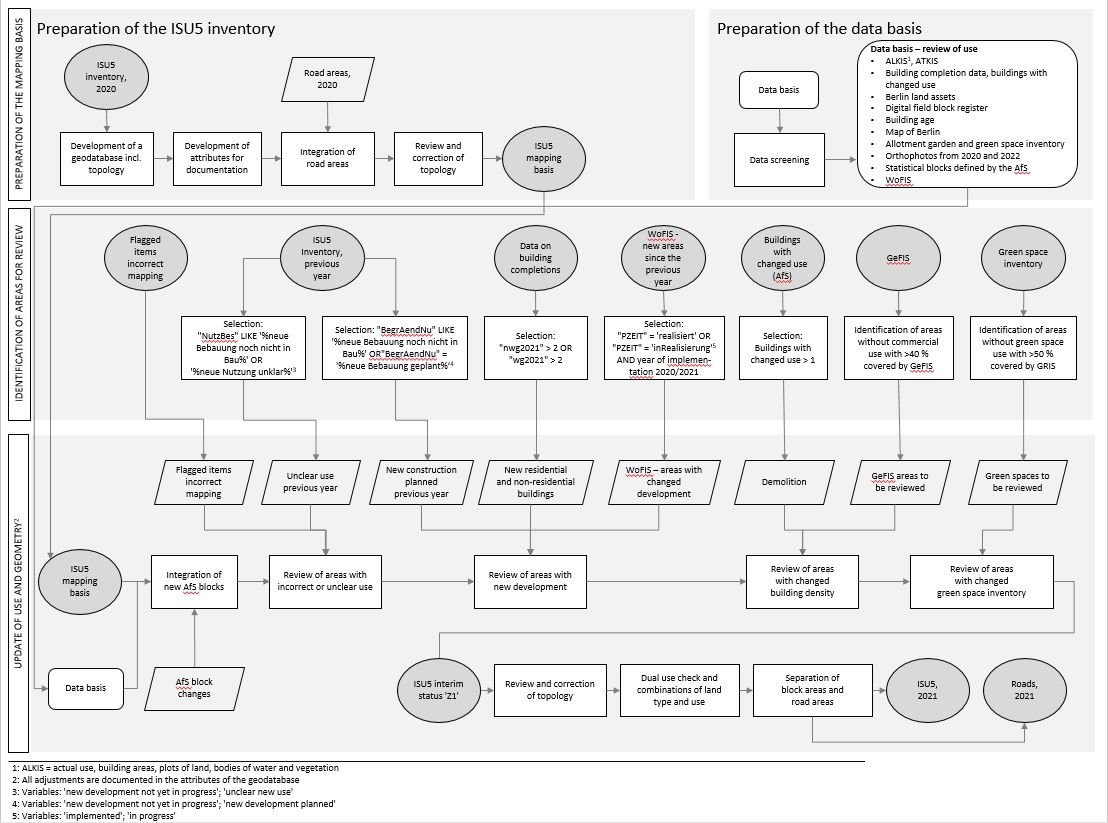Mapping Rules
For a detailed description of the mapping rules, please refer to Part II of the Final Documentation of 2020 (SenSW 2021). This section provides an overview of the most important mapping rules.
- Minimum size: ISU block segment areas may only be formed if they comply with the minimum size of 1 ha and the minimum width of 20 m. If a block contains fragments below the 1 ha limit with different uses, the dominance principle applies, i.e. the use of the larger fragment is mapped. In exceptional cases, e.g. when mapping soil associations that are particularly worthy of protection or when demarcating railway areas, the minimum size may be deviated from.
- New block (segment) keys: when a new additional block segment area is defined, it receives the next higher block segment key that has not yet been assigned. The now reduced block segment area with the ‘old’ use retains the ‘old’ key.
- Merging block segment areas: when block (segment) areas are merged, the resulting area retains one of the ‘old’ block segment area keys, usually that of the larger area or the key of the area the for which the use attributes are decisive.
- Differences between ISU and RBS (regional reference system) blocks:
- Where RBS block boundaries differed greatly from those of the ISU, the AfS was consulted and the RBS block in question was corrected.
- Greenery along roads: green spaces along roads are not part of the road area but should be included in the adjacent ISU block.
- Road area boundaries: all areas of the ALKIS category ‘Classification according to road law’ and the LGV (Berlin land assets) category ‘Civil engineering of the borough’ are considered areas outside the block according to AfS rules but are part of the blocks in the ISU map. This is the case, for example, for larger car parks adjacent to road areas.
- Differentiated land use within road areas, such as medians and traffic islands, is not reflected in the RBS geometry.
- Footpaths: park footpaths are generally part of the park and are not classified as road areas. Larger forest trails that have been delineated as road areas should remain so, if they do not run along the boundary of an RBS block. The delineation of footpaths should be as differentiated as possible based on aerial photographs (without foliage) and the geodata set of the road survey.
- New use not yet visible in the aerial photograph: for new blocks, only existing types of land use or construction sites that are visible in the aerial photograph should be recorded. Planned but not yet existing structures are not mapped.
- Bridges: railway lines are shown without interruption. For motorway bridges, the land use under the bridge is mapped.
- Maintaining the boundaries of soil associations: maintaining the boundaries of soil associations in populated areas is not a priority. Here, it is more important to precisely delineate the land use visible on the aerial photograph.

